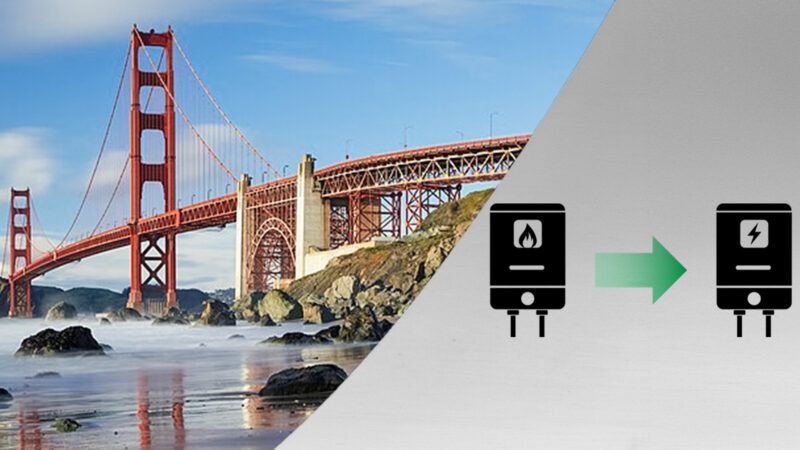San Francisco's All-Electric Ordinance Will Make Housing More Expensive
San Francisco’s new ordinance would impose all-electric building standards for new construction projects or buildings undergoing “major renovations.”

On July 28, the San Francisco Board of Supervisors Land Use and Transportation Committee unanimously approved the All-Electric Major Renovations Ordinance, which sets an all-electric building standard for commercial and residential structures undergoing "major renovations." The ordinance, proposed in 2020, is being fast-tracked in response to Assembly Bill 130, which was signed into law in June and suspends all updates to state and local building codes for six years, beginning October 1.
All-electric buildings use only electricity for heating and appliances, eliminating the need for natural gas or propane. New York mandated this for new buildings in 2024, and 150 similar laws exist nationwide, with 74 California municipalities encouraging or requiring it. San Francisco has already banned gas-fueled furnaces and water heaters in most new building construction—exceptions are made for commercial food preparation.
Local officials, such as Rafael Mandelman, president of the San Francisco Board of Supervisors, have praised the law as an "opportunity to eliminate the use of fossil fuels in our existing buildings."
"Choosing clean energy is how we build the clean, all-electric City of the future," said Mandelman.
The city is also billing the ordinance as a cost-saving measure for residents. On average, the San Francisco Environment Department estimates that newly constructed or significantly renovated all-electric single-family homes are over $2 cheaper per square foot than conventionally built homes. Meanwhile, the agency estimates that for the city's homeowners, retrofitting to all-electric appliances after construction would incur an additional cost of $2 to $4 per square foot, compared to the initial savings from construction.
Despite San Francisco officials describing the ordinance as "cost-effective," a 2025 study by the Washington Center for Housing Studies found that energy codes, such as the all-electric ordinance, increase the cost of new housing. In Washington state, building code changes, particularly energy codes, have added $39,876 to the costs of new homes since 2009.
Such increases in building costs would exacerbate San Francisco's housing shortage. Since July 2024, one-bedroom apartment rental prices in San Francisco have increased by 13.3 percent, while the cost of a two-bedroom apartment has increased by 16.3 percent. Regulations have a significant impact on housing costs, accounting for 40.6 percent of multifamily development expenses, according to a 2022 study by the National Association of Home Builders. San Francisco and New York are already among the most expensive cities nationwide for construction, ranking in the top 10 globally in building costs.
Beyond construction costs, potential effects of the ordinance on utility bills for residents are unclear. Energy Department studies indicate that natural gas is more affordable than electricity and other residential fuels, resulting in annual savings for consumers on their utility bills. Yet on average, homes mainly powered by natural gas spend $1,950 on total energy expenditures, compared to $1,650 for mainly electric-powered homes.
The final hearing to pass the ordinance is tentatively scheduled for September 2, according to Canary Media. If enacted, it would become effective in July 2026.


Show Comments (21)